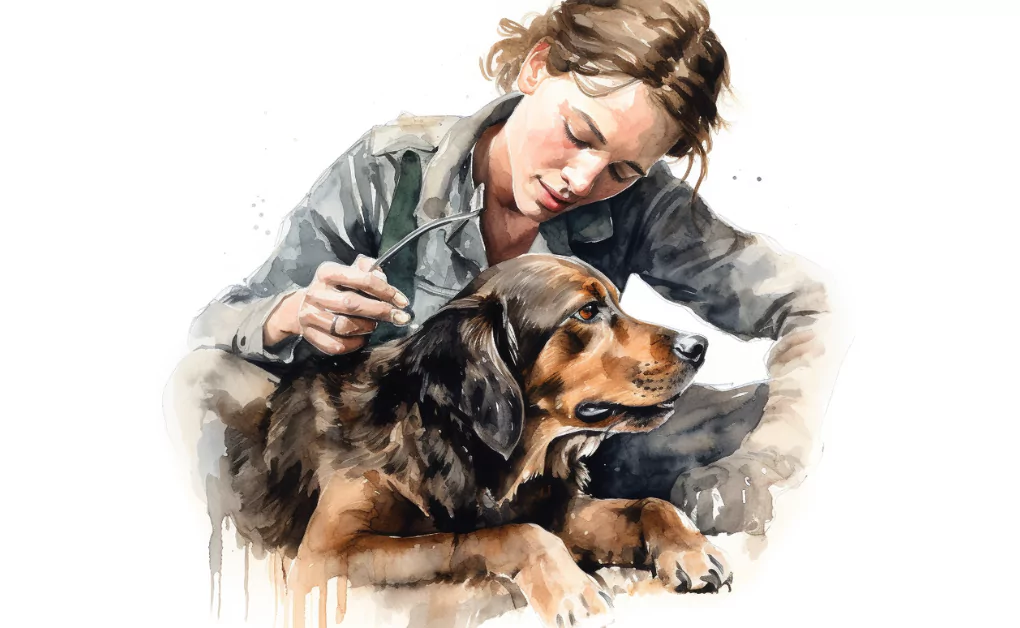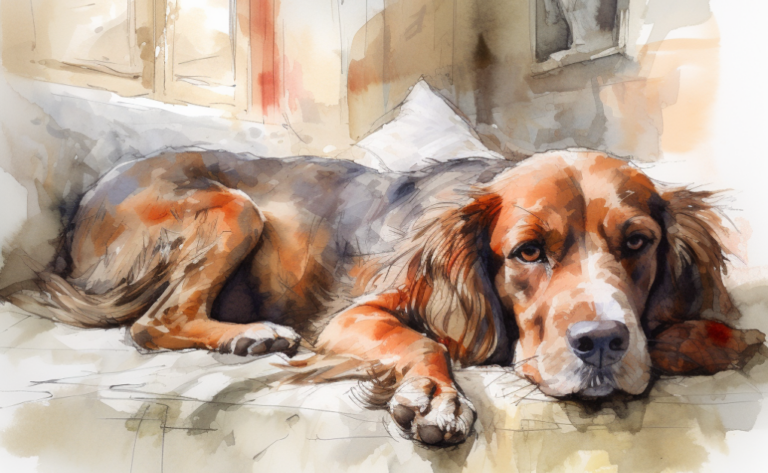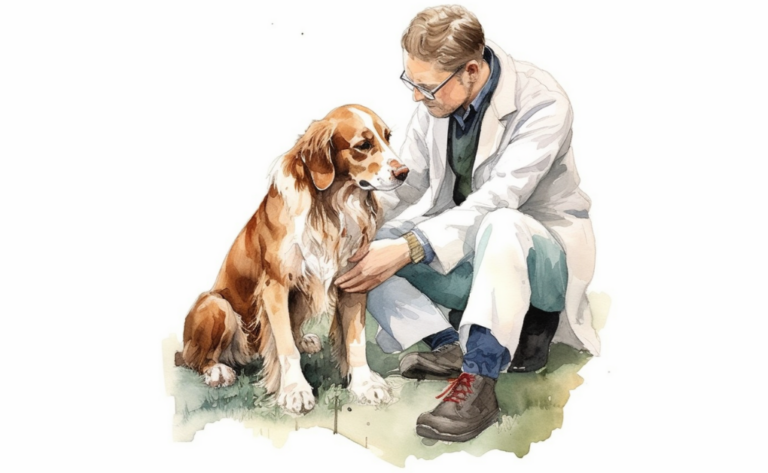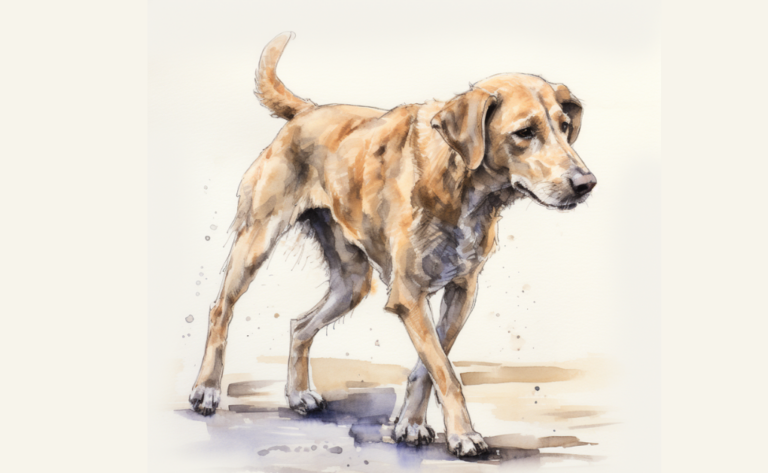What is Intervertebral Disc Disease in Dogs?
What is it?
How is it Treated?
Breed Predispositions
Dachshunds French Bulldogs Beagles Basset Hounds Pekingese Shih Tzus Corgis Lhasa Apsos Miniature Pinschers Poodles
Introduction
As Lisa watched her cherished Dachshund, Frankie, play in the living room, she noticed him suddenly whining in pain and struggling to move his back legs. Concerned about her beloved pet’s well-being, Lisa took Frankie to the veterinarian for a comprehensive examination. After a thorough evaluation, the vet diagnosed Frankie with intervertebral disc disease (IVDD), a spinal condition that can affect dogs, particularly those with long backs like Dachshunds.
Intervertebral Disk Disease (IVDD) in dogs is a prevalent neurological ailment marked by the degeneration and herniation of the intervertebral discs within the spine. The discs function as shock absorbers between the vertebrae, providing flexibility to the spinal column. When these discs undergo degeneration or herniation, they pressure the spinal cord or nerve roots, leading to pain, neurological deficits, and possibly paralysis.
Types of IVDD in Dogs
The disease typically manifests in two main forms:
Hansen Type I IVDD
This type, synonymous with Type I IVDD, is defined by the sudden extrusion or rupture of the nucleus pulposus, the inner part of the intervertebral disc, causing severe spinal cord compression. This form is predominantly seen in chondrodystrophic breeds, such as Dachshunds, Beagles, and Pekingese, which are genetically predisposed to early disc degeneration. Predominantly affecting younger dogs, Type I can lead to acute pain and neurological dysfunction.
Hansen Type II IVDD
Also known as Type II IVDD, this type contrasts with Type I by involving a slower, progressive degeneration of the annulus fibrosus, the disc’s outer layer, leading to disc protrusion and spinal cord compression. Type II IVDD commonly affects medium to large breed dogs such as German Shepherds and Labrador Retrievers and is prevalent among middle-aged to older dogs. It can cause chronic pain and gradual neurological decline.
Specific types of IVDD, such as thoracolumbar IVDD, cervical IVDD, and lumbosacral IVDD, refer to the disease’s location along the spine. Disc herniation and disc extrusion are expected consequences of the condition. Therefore, comprehension of the different forms of intervertebral disc disease in dogs, including the specifics of Type I and Type II IVDD, is crucial for early detection, appropriate treatment, and effective management of this potentially debilitating condition.
What Causes Intervertebral Disc Disease in Dogs?
Diverse factors can instigate the degeneration or harm to the intervertebral discs, resulting in Intervertebral Disc Disease (IVDD) in dogs. Gaining insights into the causes of IVDD can equip pet owners to implement preventive measures and identify the disease’s early signs in their canine companions.
Here’s a look at the usual culprits behind Intervertebral Disc Disease in dogs:

- Inherent predisposition: Certain breeds, especially chondrodystrophic ones like Dachshunds, Beagles, and Pekingese, carry a genetic predisposition to early degenerative changes in their discs, heightening their susceptibility to IVDD.
- Advancing age: As dog’s age, their intervertebral discs naturally dehydrate and lose elasticity, enhancing the risk of degeneration and herniation. This phenomenon is typically more common in middle-aged to older dogs.
- Traumatic incidents: Mishaps such as accidents, falls, or other traumatic events can damage the intervertebral discs, leading to herniation and spinal cord compression.
- Overexertion: Habitual activities placing excessive strain on the spine, like jumping or executing physically strenuous tasks, can, over time, contribute to the onset of IVDD.
- Obesity: Dogs carrying excess weight bear additional strain on their spinal column, hastening disc degeneration and escalating the risk of severe IVDD.
- Sedentary lifestyle: Inactive dogs may develop weakened back muscles and diminished spinal flexibility, contributing to disc degeneration and the manifestation of IVDD.
Although some triggers of Intervertebral Disc Disease in dogs, such as genetics and age, are immutable, pet owners can address modifiable elements, like weight control and activity levels, to curtail their dogs’ risk of IVDD. Doing so can prevent damage to the spinal cord and help avoid situations where disc ruptures occur, causing spinal cord injury in dogs with this condition.
Symptoms of Intervertebral Disc Disease in Dogs
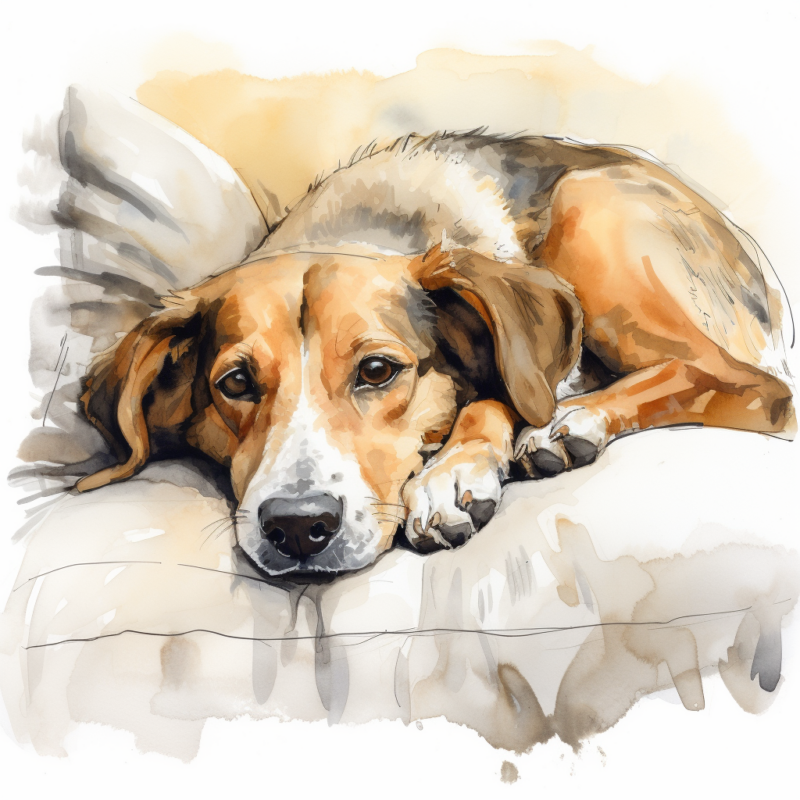
Identifying the symptoms of Intervertebral Disc Disease (IVDD) in dogs is crucial for early diagnosis and prompt treatment. The clinical signs can vary based on the condition’s severity, the affected disc’s location, and the extent of the spinal cord or nerve root compression. Here are some familiar symptoms of Intervertebral Disc Disease seen in dogs:
- Discomfort: Dogs suffering from IVDD may show signs of severe pain, such as vocalizing, reluctance to move, or sensitivity to touch along the spine. Pain may be more intense in the neck, back, or limbs, depending on where the disc herniation has occurred. Most disc ruptures occur in the mid back, and many appear in the neck.
- Rigidity: Dogs with IVDD may display stiffness, evidenced by a rigid gait, decreased spinal flexibility, or an arched back due to discomfort and inflammation.
- Muscle Weakness: IVDD can lead to limb weakness, making it challenging for dogs to stand, walk, or climb stairs. In severe cases, dogs may experience partial or complete paralysis, affecting their walking ability.
- Impaired Mobility: Dogs suffering from IVDD may exhibit an unsteady, wobbly, or dragging gait, predominantly in the hind limbs.
- Loss of Control: In some instances, IVDD can lead to bladder or bowel control loss, resulting in urinary or fecal incontinence.
- Behavioral Alterations: Dogs grappling with IVDD may display behavioral changes, such as lethargy, depression, or irritability due to pain and discomfort.
If your dog shows any of these symptoms, especially dogs two years and older, it is imperative to seek a veterinarian’s advice for a comprehensive evaluation and suitable treatment. Early intervention can significantly enhance the prognosis and quality of life for dogs experiencing IVDD and compress the spinal cord.
Diagnosis of Intervertebral Disc Herniation in Dogs
Identifying Intervertebral Disc Disease (IVDD) in dogs requires a multifaceted approach encompassing an exhaustive clinical examination, comprehensive medical history, and advanced imaging techniques to evaluate the affected disc and spinal cord. Here are the steps typically employed by veterinarians to diagnose IVDD in dogs:
- Clinical assessment: The veterinarian will undertake a detailed physical examination to assess the dog’s overall health, pinpoint signs of discomfort, and evaluate neurological function. This could involve palpating the spine, observing the dog’s gait, and conducting reflex tests.
- Medical history: A thorough medical history will assist the veterinarian in recognizing any potential predisposing factors, such as breed, age, prior injuries, or lifestyle factors, which could contribute to developing this common spinal disease, IVDD.
- Radiographic imaging (X-rays): X-rays can offer crucial information regarding the overall health of the spine and aid in identifying any changes in the bone or areas of disc narrowing. However, they might not sufficiently visualize the soft tissues, including the intervertebral discs and spinal cord.
- Advanced imaging: For a more detailed view of the affected disc and surrounding structures, advanced imaging techniques such as computed tomography (CT) scans, or magnetic resonance imaging (MRI) may be recommended. These imaging modalities can help pinpoint the exact location and severity of the disc herniation, commonly referred to as herniation of the disc, and assess the degree of spinal cord compression.
- Cerebrospinal fluid (CSF) analysis: Sometimes, a cerebrospinal fluid sample may be collected and examined to exclude other possible causes of neurological symptoms, such as inflammation or infection.
The diagnostic procedure for IVDD in dogs may vary depending on the individual case and the severity of the condition. However, an accurate diagnosis is critical to determine the most suitable treatment plan and provide the best prognosis, especially for dogs who do not regain normal function. In addition, understanding the condition and how IDVV occurs is crucial in managing it effectively.
Treatment Options for Intervertebral Disc Degeneration in Dogs
The treatment for Intervertebral Disc Disease (IVDD) in dogs can comprise surgical and non-surgical treatments, contingent on factors such as the condition’s severity, the slipped disc’s location, and the dog’s overall health status. Here’s an outline of both treatment methods:
Non-Surgical Treatment Options
- Medications: Non-steroidal anti-inflammatory drugs (NSAIDs) or corticosteroids may be administered to alleviate inflammation, swelling, and pain associated with intervertebral disc issues. Muscle relaxants might also be utilized to ease muscle spasms.
- Management of discomfort: Aside from medications, pain management might encompass alternative modalities such as acupuncture, cold laser therapy, or transcutaneous electrical nerve stimulation (TENS).
- Rest and limitation of movement: Strict rest and confinement are imperative to curtail movement and forestall further injury to the spinal cord. Dogs might necessitate crate rest for several weeks to facilitate healing of the affected area.
- Rehabilitation: Once the dog’s condition has stabilized and under the veterinarian’s direction, a rehabilitation program might be suggested to bolster strength, flexibility, and overall mobility.
Surgical Treatment Options
Surgical interventions for Intervertebral Disc Disease (IVDD) in dogs are generally contemplated when nonsurgical treatments fail to alleviate the condition or if the dog’s symptoms are severe, such as significant neurological deficits or paralysis. Here are different IVDD surgeries typically used for dogs:
- Hemilaminectomy: This prevalent surgical procedure for IVDD involves the extraction of a section of the vertebra to access and eliminate the herniated disc material, thereby alleviating spinal cord pressure. This procedure is generally utilized for thoracolumbar disc extrusion (mid to lower back).
- Ventral Slot Surgery: This operation is typically used for disc protrusions in the cervical region (neck). The surgeon extracts a small section of the bone on the underside of the vertebrae to create a ‘slot,’ enabling them to remove the herniated disc and decompression of the spinal cord.
- Dorsal Laminectomy: This procedure mirrors a hemilaminectomy but is generally used for disc protrusions in the lumbosacral region (lower back). The surgeon extracts a portion of the bone on the vertebrae’s upper side to access and remove the herniated disc material.
- Fenestration: This procedure is often conducted in conjunction with other surgical procedures. The process involves making small incisions in multiple intervertebral discs to extract a portion of the disc material, lowering the risk of future disc herniations.
- Spinal Stabilization: In specific scenarios, additional operations may be necessary to stabilize the spine if it becomes unstable following surgery. This could involve the use of metal implants such as pins or screws.
- Disc Prosthesis: In rare instances and typically in specialized veterinary centers, an artificial disc may be implanted to maintain standard disc space and spine movement after disc removal.
It’s important to acknowledge that while surgical treatments can be highly effective, they also carry risks, including infection, bleeding, and potential damage to the spinal cord. In addition, the recovery process following surgery often involves strict rest, physical therapy, and ongoing pain management. Therefore, the suitability of a surgical treatment option for a specific dog will depend on various factors, including the severity and location of the IVDD, the dog’s overall health, and the availability of surgical expertise and equipment.
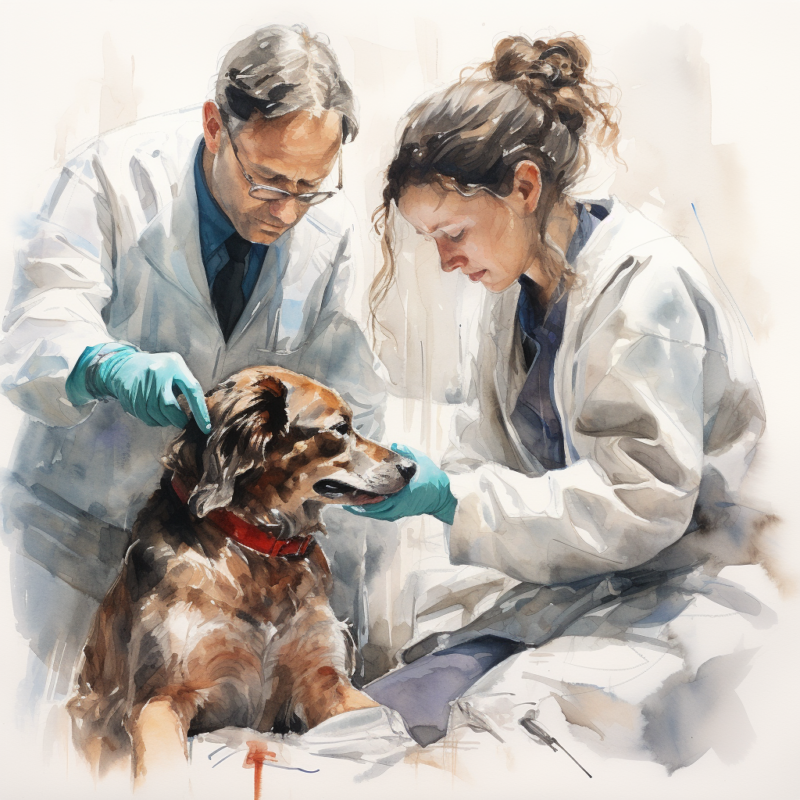
Supportive Care
Supportive care plays a critical role in the management of IVDD and may include:
- Physical therapy and rehabilitation exercises to help maintain muscle strength, flexibility, and overall mobility
- Weight management to reduce strain on the spine
- Assistive devices, such as harnesses or carts, to support mobility in dogs with significant weakness or paralysis
The appropriate treatment plan for each dog will depend on the individual case and the veterinarian’s assessment. However, early intervention and comprehensive care are crucial to improving the prognosis and quality of life for dogs with intervertebral disc disease.
How to Prevent Intervertebral Disc Degeneration in Dogs
Although completely preventing Intervertebral Disc Disease (IVDD) in dogs, especially in breeds with a genetic predisposition, may not be feasible, pet owners can implement numerous strategies to lessen the risk and preserve their dog’s spinal health. These preventive measures can aid in mitigating the likelihood of IVDD and decelerate the progression of the disease:
- Weight regulation: Keeping a healthy weight is vital to reduce strain on the spine and lower the risk of IVDD. Implement a balanced diet and consistently monitor your dog’s weight. Consult your veterinarian for an appropriate diet and exercise plan tailored for your dog.
- Consistent physical activity: Involve your dog in regular, moderate physical exercise to help fortify their muscles and retain flexibility. Low-impact activities such as swimming and walking are recommended for dogs to support spinal health. However, avoiding excessive jumping or twisting activities is crucial, which can strain the spine.
- Correct lifting methods: When picking up your dog, support its chest and hindquarters to prevent unnecessary stress on its spine. This is especially important for smaller breeds and large breeds of dogs with long backs, such as Dachshunds and Basset Hounds, who are likely to experience early degenerative problems with the same disc.
- Evading unsafe surfaces: Prevent your dog from encountering slippery surfaces or uneven terrain that could result in falls or injuries. Ensure traction on floors with the use of non-slip rugs or mats.
- Orthopedic assistance: Arrange a supportive and comfortable resting surface for your dog, like an orthopedic bed, to help relieve pressure on their spine and joints.
- Routine veterinary examinations: Regular veterinary check-ups can help monitor your dog’s overall health and detect any initial signs of IVDD. Early detection and intervention can enhance the prognosis and management of the condition, reducing the risk of recurring IVDD.
By adhering to these preventive measures, you can assist in maintaining your dog’s spinal health and lessen its risk of developing Intervertebral Disc Disease. However, it is critical to acknowledge that certain factors, such as genetics and breed predisposition, may still contribute to the likelihood of disc disease in specific dogs. Despite these preventive measures, it is most common in certain predisposed breeds.
Frequently Asked Questions
Disclaimer: The information provided on this veterinary website is intended for general educational purposes only and should not be considered as a substitute for professional veterinary advice, diagnosis, or treatment. Always consult a licensed veterinarian for any concerns or questions regarding the health and well-being of your pet. This website does not claim to cover every possible situation or provide exhaustive knowledge on the subjects presented. The owners and contributors of this website are not responsible for any harm or loss that may result from the use or misuse of the information provided herein.

